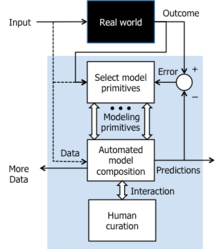Ken Banks at kiwanja.net: “The ubiquity of mobile phones, the reach of the Internet, the shear number of problems facing the planet, competitions and challenges galore, pots of money and strong media interest in tech-for-good projects has today created the perfect storm. Not a day goes by without the release of an app hoping to solve something, and the fact so many people are building so many apps to fix so many problems can only be a good thing. Right?
The only problem is this. It’s become impossible to tell good from bad, even real from fake. It’s something of a Wild West out there. So it was no surprise to see this happening recently. Quoting The Guardian:
An app which purported to offer aid to refugees lost in the Mediterranean has been pulled from Apple’s App Store after it was revealed as a fake. The I Sea app, which also won a Bronze medal at the Cannes Lions conference on Monday night, presented itself as a tool to help report refugees lost at sea, using real-time satellite footage to identify boats in trouble and highlighting their location to the Malta-based Migrant Offshore Aid Station (Moas), which would provide help.
In fact, the app did nothing of the sort. Rather than presenting real-time satellite footage – a difficult and expensive task – it instead simply shows a portion of a static, unchanging image. And while it claims to show the weather in the southern Mediterranean, that too isn’t that accurate: it’s for Western Libya.
The worry isn’t only that someone would decide to build a fake app which ‘tackles’ such an emotive subject, but the fact that this particular app won an award and received favourable press. Wired, Mashable, the Evening Standard and Reuters all spoke positively about it. Did no-one check that it did what it said it did?
This whole episode reminds me of something Joel Selanikio wrote in his contributing chapter to two books I’ve recently edited and published. In his chapters, which touch on his work on the Magpi data collection tool in addition to some of the challenges facing the tech-for-development community, Joel wrote:
In going over our user activity logs for the online Magpi app, I quickly realised that no-one from any of our funding organisations was listed. Apparently no-one who was paying us had ever seen our working software! This didn’t seem to make sense. Who would pay for software without ever looking at it? And if our funders hadn’t seen the software, what information were they using when they decided whether to fund us each year?
…The shear number of apps available that claim to solve all manner of problems may seem encouraging on the surface – 1,500 (and counting) to help refugees might be a case in point – but how many are useful? How many are being used? How many solve a problem? And how many are real?
Due diligence? Maybe it’s time we had an app for that…(More)”

 DARPA
DARPA